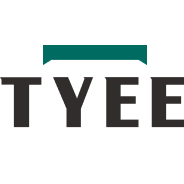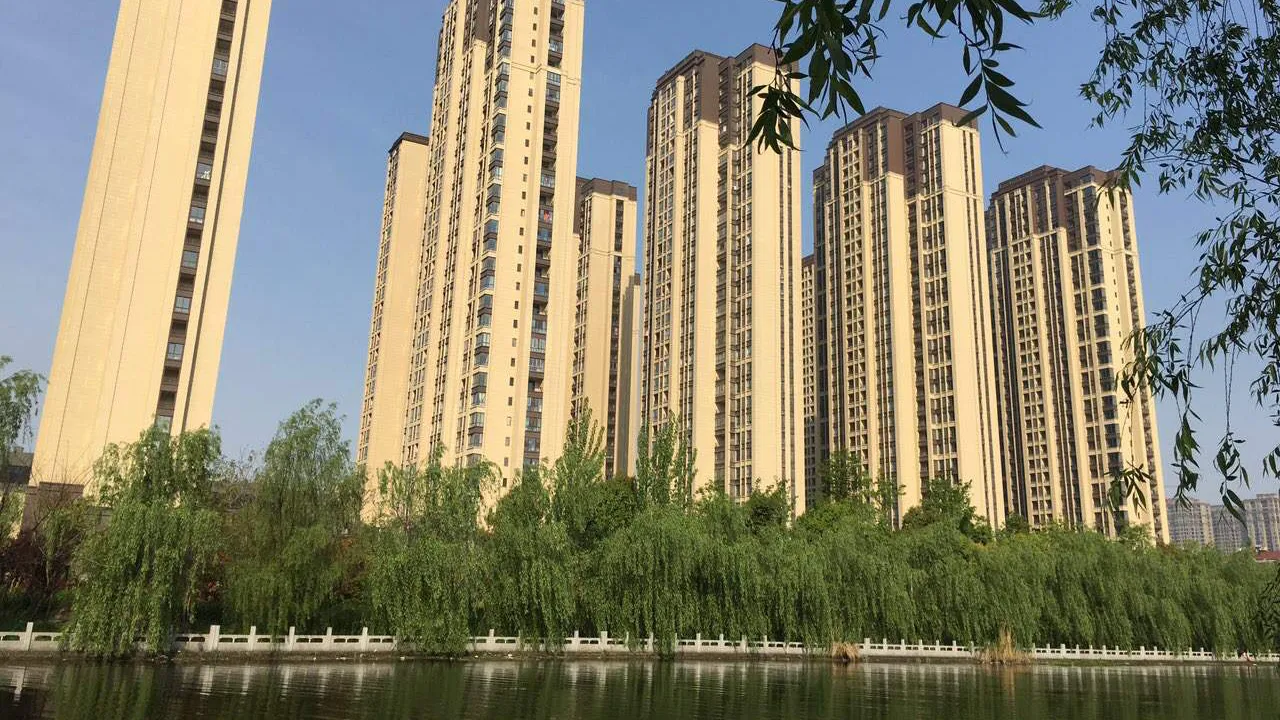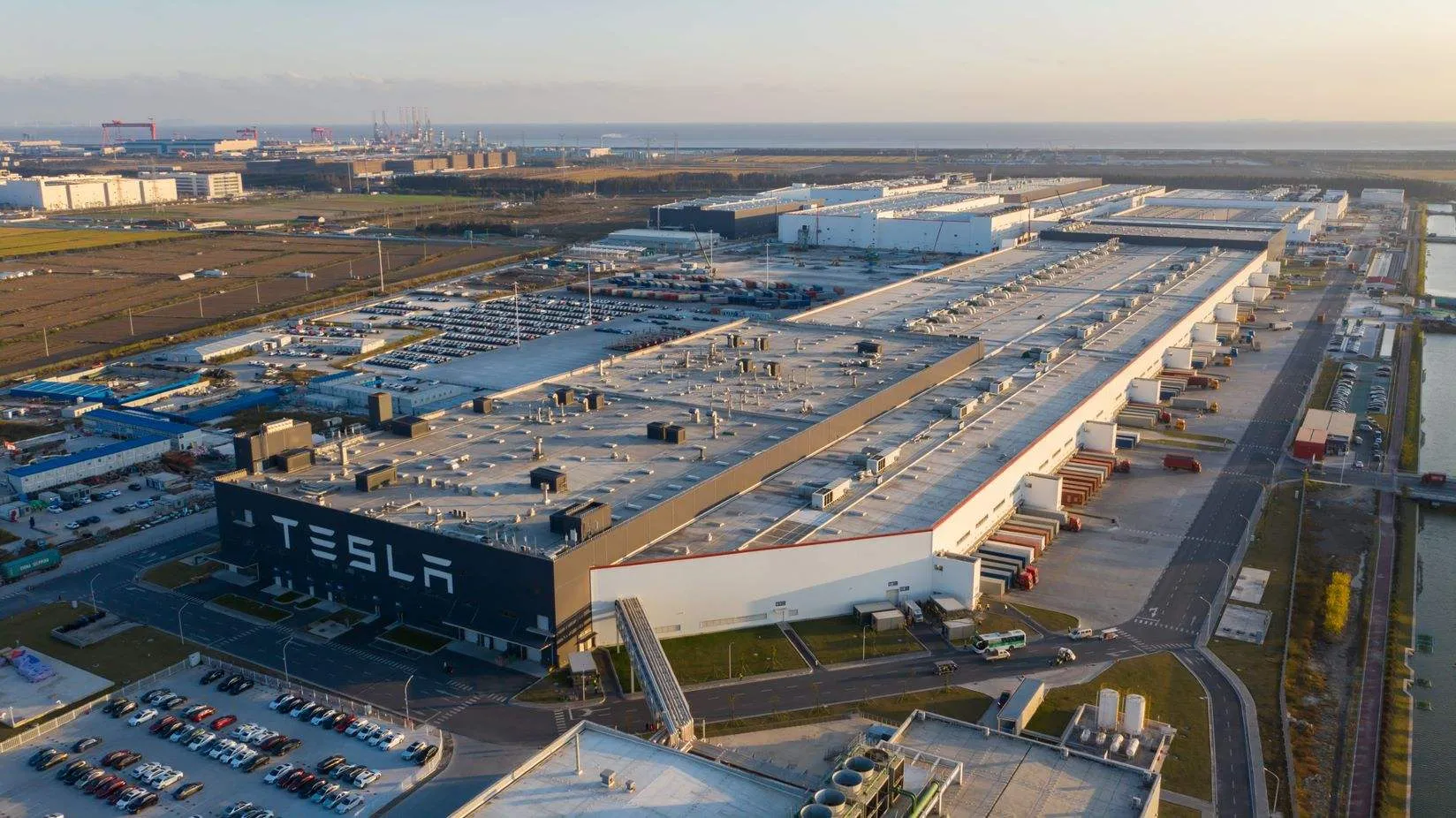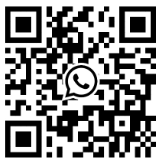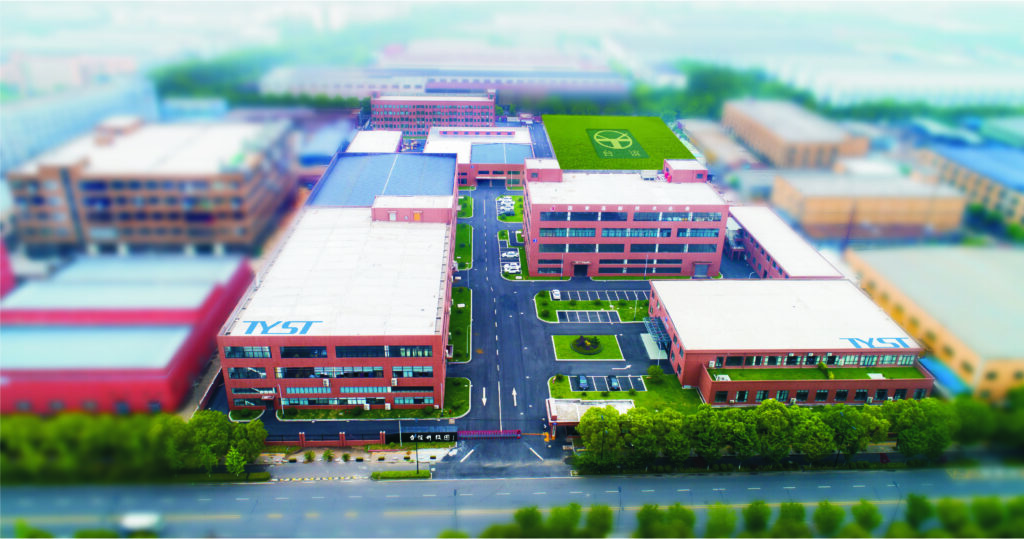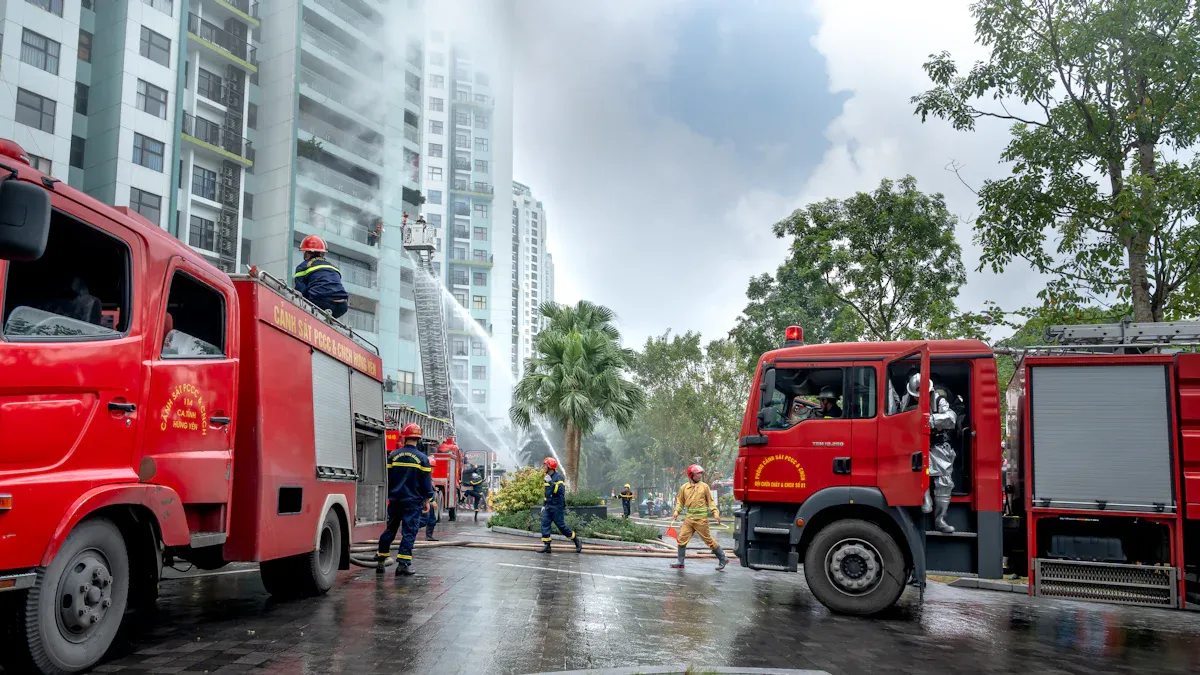
University campuses in developing regions face significant fire safety challenges. High population density, aging buildings lacking modern systems, and limited funding increase risks. Fire safety is critical to protect students, staff, and property from harm and loss. Early actions to reduce risks can save lives and minimize damage.
Remember: Even small safety measures can make a difference during emergencies.
Key Takeaways
University campuses in developing regions have high fire risks. Crowded spaces, old buildings, and weak safety systems cause problems.
Not enough money and little awareness make fire prevention hard. It is tough to respond quickly when emergencies happen.
New technologies like IoT sensors and smart alarms help a lot. They find fires early and show people how to leave safely.
Training, drills, and clear safety plans help students and staff. These things teach everyone to act fast and stay safe.
Everyone on campus can help with fire safety. People should report hazards, follow rules, and support safety efforts.
Fire Safety Challenges

Campus Density and Infrastructure Risks
University campuses in developing regions have special risks. Many students live and study in crowded spaces. Old dorms and classrooms often have bad wiring. There are not enough emergency exits. When many people are close together, a small fire can spread fast. Sometimes, hallways or stairs are blocked with stuff. This makes it hard to get out quickly. If buildings do not have modern systems, smoke alarms may not work. Emergency lights might also fail. These problems can turn a small fire into a big disaster. You should notice these risks and try to fix them.
Tip: Make sure hallways and exits are always clear. Fast exits can save lives in an emergency.
Resource and Awareness Limitations
Some campuses do not have enough money for new safety tools. Staff and students may not know how to spot fire dangers. They might not know what to do when alarms go off. Many fires happen because people break simple safety rules. Smoking carelessly and drinking alcohol can slow down getting out. If you do not know the evacuation plan, you put others at risk. Not taking care of smoke alarms is also dangerous. Risky actions and not knowing about fire safety make things worse.
Smoking carelessly and drinking alcohol can cause deadly fires.
Not knowing how to evacuate or act safely raises fire danger.
Ignoring or not fixing smoke alarms lets hazards grow.
Unsafe choices and not knowing what to do slow down safe exits.
TYEE African Market Case Study
TYEE’s story in Africa teaches us important lessons. TYEE had to deal with tough weather and different fire safety rules. The company made fire alarm systems that work well in bad weather. These systems watch for danger all the time and help people leave safely. TYEE checked each site carefully and followed local rules. They keep the systems working with training and repairs. TYEE’s solutions help buildings stay safe and protect people. Clients say the systems are easy to use and make everyone safer.
TYEE systems work in harsh weather and help many businesses.
Watching for danger and helping people leave keeps everyone safe.
Training and repairs keep the systems working well.
Better safety rules and being ready make campuses safer.
Risks and Impact
Human and Academic Loss
Fires on campus pose serious dangers to students and staff, potentially causing injuries or fatalities. Evacuations may force temporary closures of dorms and classrooms, disrupting learning for days or weeks. This interruption can cause students to miss important lessons and exams. Some universities use online platforms and special plans to continue education and support affected students.
Fires put your safety at risk and can make you leave school.
Schoolwork stops, and you might miss lessons or tests.
Schools use emergency plans, online classes, and mental health help to support you.
Some universities, like California State University, Chico, start new programs after disasters to help everyone learn and feel better.
Remember: If you know your campus fire safety plan, you can act fast and stay safe.
Financial and Reputational Damage
A fire does not just hurt people. It also costs a lot of money. Buildings, books, and computers can be ruined. The university must pay to fix or buy new things. Sometimes, classes move online or to other places, which costs more. If a school cannot fix things fast, students may leave. Parents might worry about sending their kids there. The university’s name can get a bad reputation. People may think the campus is not safe. To stop these problems, schools buy fire safety systems and teach everyone what to do.
Fires break things and make schools spend money to fix them.
Waiting to reopen can mean losing money and students.
A bad reputation makes it hard to get new students and teachers.
Good fire safety programs help protect money and trust.
Solutions for Campuses
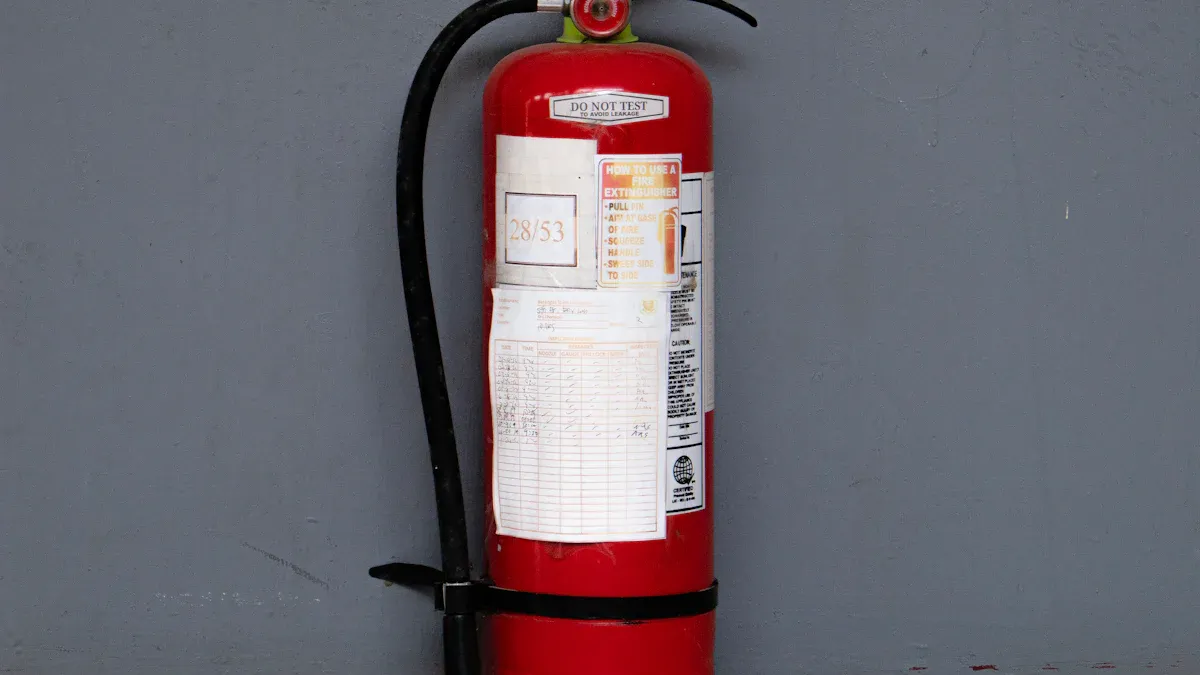
Advanced Fire Safety Technologies
Modern campuses need good technology to keep people safe. Advanced systems can find danger and help people escape fast. TYEE gives smart solutions for universities in developing regions.
IoT sensors check temperature, smoke, and air quality all the time. These sensors find fire risks early.
Connected smoke detectors talk to each other. They can turn off power or start alarms right away.
TYEE’s fire alarm systems use smart tools to find fires quickly and stop false alarms.
The emergency lighting system lights up exits and escape paths with bright LEDs. It changes the way out if fire blocks a path.
Central control shows alerts for broken lights or blocked exits. You can fix problems before they get worse.
TYEE’s systems work with IoT and cloud platforms. You can watch and control everything, even from far away.
The system works for big campuses. You can connect many controllers and set alarms for different needs.
TYEE also helps with special risks like gas leaks in kitchens and electrical overloads in dorms.
Note: TYEE’s emergency lighting system meets national safety standards. You can trust it to work when you need it most.
Here is a table showing some of the best fire safety technologies for campuses:
Technology Type | Description | Benefits for University Campuses in Developing Regions |
|---|---|---|
IoT-enabled Fire Detection | Devices use IoT to give real-time data on fire safety and environment | Early detection, remote watching, and quick fixes to lower downtime |
AI-powered Predictive Detection | AI looks at sensor data (temperature, smoke, air quality) to find fire risks early | Better accuracy, fewer false alarms, and helps stop fire risks |
Multi-Sensor Detectors | Mix smoke, heat, and CO sensors for better fire finding | Fewer false alarms, better detection in different campus places |
Infrared Thermal Cameras | Watch temperature changes to find fires before you see them | Early help, important for big or tricky campus buildings |
Smart Building Integration | Fire safety systems work with Building Management Systems (BMS) | Makes responses automatic, helps people leave faster |
Centralized Monitoring | One dashboard for real-time alerts and checks | Makes fire safety easier to manage across campus buildings |
A university in California used an AI fire detection system with infrared cameras and IoT sensors. This setup lowered false alarms and helped students leave faster during a real fire. You can see how new technology helps a lot.
Management & Training Solutions
Technology alone is not enough; effective management and training are essential. TYEE offers tools and programs to educate students and staff on emergency procedures.
You can teach students and staff how to use fire extinguishers and follow evacuation plans.
Public information and safety lessons help everyone learn about fire risks.
Regular drills and hands-on training make sure people know how to act fast and stay calm.
TYEE’s systems let you run drills and see who joins. You can find where more practice is needed.
Training helps lower injuries and saves lives. It also helps people feel responsible together.
Tip: Put fire safety plans and exit routes in every building. Make sure everyone knows where to go.
Many universities, like Cornell and the University of Pennsylvania, do hundreds of fire safety trainings and drills each year. These programs help people learn and work together in emergencies.
TYEE Tailored Solutions for Developing Regions
Developing regions have special problems. TYEE makes solutions that fit these needs. You get systems that work well even if resources are low.
TYEE’s smart power monitoring finds overloaded circuits and illegal wiring. This stops many electrical fires before they start.
The system checks fire water tanks and pipes. You always know if you have enough water for emergencies.
Wireless alarms with smoke, gas, and carbon monoxide detectors give early warnings. They cover more areas and help people evacuate sooner.
AI video monitoring watches corridors and exits. It spots blocked paths and illegal parking, keeping escape routes clear.
TYEE’s cloud platform lets you see all your equipment, alerts, and inspection logs in one place. You can manage everything from a single dashboard.
The system uses battery backup. It keeps working for at least 90 minutes during power outages.
Easy installation and low maintenance make TYEE’s solutions practical for places with fewer technical workers.
The system meets international standards and has over 99.9% uptime. You can trust it to protect your campus.
Callout: TYEE’s work in Africa shows these solutions really help. The company changed its systems for tough weather and local rules. Clients say the systems are easy to use and make campuses much safer.
You can see that TYEE’s fire safety solutions help you find dangers early, warn people fast, and guide safe evacuation. With the right mix of technology, training, and smart management, you can protect your campus and everyone on it.
Campus Community Actions
Hazard Reporting and Drills
Everyone on campus plays a role in fire safety. Report hazards such as broken alarms, blocked exits, or unsafe electrical use promptly.Participate seriously in regular fire drills to learn evacuation routes and practice safe behavior. Treat drills as real emergencies to prepare effectively.
Tip: Always take fire drills seriously. Treat every drill like a real emergency. This practice can save lives.
Here is a table showing how often drills should happen:
Campus Area | Drill Frequency | Notes |
|---|---|---|
Classrooms/Labs | At least once a year | Announced, with clear exit routes posted |
Dormitories | At least once a year | Resident assistants lead; extra drills for safety |
All Areas | Full participation | Drills should use different times and exits |
Fire Safety Awareness Promotion
You can help build a safer campus by learning about fire risks and sharing what you know. Schools use many ways to teach fire safety. You might see posters, signs, or even special events like fire safety escape rooms. These activities make learning fun and help you remember what to do.
Some of the best ways to raise awareness include:
Attending training sessions on how to use fire extinguishers and alarms.
Knowing where fire safety equipment is located in your building.
Reading and following fire safety signs.
Joining fire safety committees or groups on campus.
Taking part in workshops and safety talks.
Many schools also ban risky items like candles and hot plates in dorms. They check rooms for safety and teach you about safe cooking and battery use. When you know the rules and follow them, you help prevent fires.
Remember: Most campus fires happen at night or on weekends. Stay alert and make safe choices, especially during these times.
When you learn about fire safety and take action, you help protect yourself and everyone around you.
You help keep your campus safe. TYEE’s systems use IoT and AI to spot danger early. They also help stop false alarms and let you act fast. These systems link alarms, sprinklers, and hydrants for better safety. Here are ways to stay safe right now:
Take part in drills and training to learn what to do.
Always follow safety rules and tell someone if you see danger.
Help upgrade old equipment and support safety rules.
Working with staff and friends helps everyone get ready and stay safe.
FAQ
What should you do if you see a fire on campus?
Pull the nearest fire alarm, evacuate immediately using the closest safe exit, and call campus security or emergency services once outside.
How do TYEE fire safety systems help during a power outage?
TYEE systems have battery backups that keep alarms and emergency lights working for at least 90 minutes.You can still see exit signs and hear alerts even if the power goes out.
Why are regular fire drills important for you?
Fire drills teach you how to leave safely and quickly. You learn where exits are and what to do in an emergency. Practicing helps you stay calm and avoid panic.
Can TYEE systems detect gas leaks in campus kitchens?
Yes. TYEE systems use special sensors to find gas leaks fast. The system sounds an alarm and can shut off the gas automatically. This helps keep you and others safe.

